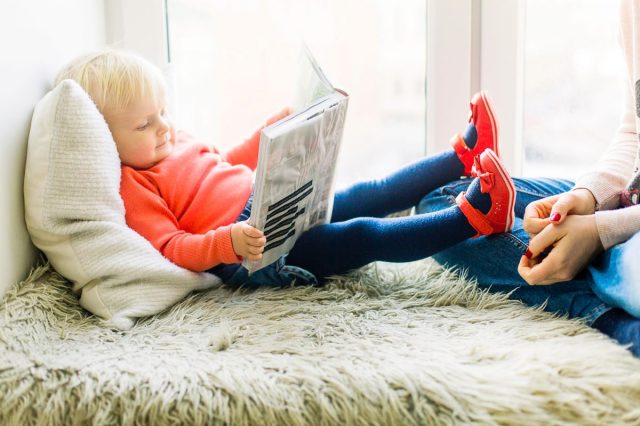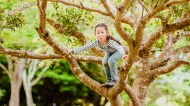Did you know that 80 percent of the brain develops in the first three years of life? Our kids go from crawling to running, from babbling to speaking, from being a quiet observer to having a full-fledged personality. As moms and entrepreneurs in the world of child development and kids products, we often find ourselves and friends asking how to create an environment at home that supports our kids’ physical and intellectual growth before they start school. What we’ve found through our research and interviews is that as kids travel through growth stages, their world—real or imagined—also shifts. As parents, we can create environments that are developmentally appropriate and that stimulate their emerging milestones. Here are a few baby nursery ideas and toddler updates that will take you through the first three years of life.
0 to 12 Months: Focus on the Floor
Your baby spends most of the first year of her life developing the physical strength to go from lying down to sitting to crawling and walking. She is also developing her spatial awareness and the drive to go after what she wants. The best way to nurture these budding skills is to spend some of your awake time every day on the floor, giving her chances to play on her back and on her tummy. While it’s often taken for granted, we can create a very rich, immersive environment for her down there, starting by getting down there with her.
Start her under a play gym (We love this space-themed play gym), where she develops her vision and learns to reach and bat. Then, add soft, sensory, activity toys—whether balls, rings, rattles, plush activity toys—so she can practice grabbing, pulling, dropping, shaking, and experimenting with sounds. As she gets more mobile, the same toys will motivate her to roll, scoot, pivot, army crawl, and more as she expresses her desire to bring them into her world.
13 to 24 Months: The Experiment Lab

In the second year, that baby becomes a fast-moving and curious toddler! She loves to explore and experiment—making hypotheses about the world, testing them, and repeating the experiment over and over. She is noticing patterns and routines. This is the perfect age to indulge her desire to learn how the world works—how do things turn on and off? How do they move? How do we use words to express what we want?
We love creating an environment that nurtures her growing curiosity, gives her space to experiment, and gives us opportunities to participate in the conversation. Include toys like a shape sorter that teaches her to manipulate and match objects, a car ramp or wooden pull toy that teaches her cause and effect, and of course, toddler books that reinforce her understanding of the routines and people in her world, that she will no doubt ask to read over and over again!
As she gets closer to 24 months, she can also start to experiment with basic games like First Orchard—especially now that she is learning to follow simple commands. Watch as she explores and experiments with different ways to play the game!
25 to 36 Months: Pretend play, Every Day
As she moves through her third year, she becomes an independent, high-energy storyteller. She loves to act like the adults around her, learning that she can play pretend! That block over there? That’s not a block, it’s a phone—let’s call grandma! It’s the perfect time to design her play space around imaginative play and problem-solving—incorporating tools that can set up an infinite number of storylines that develop language, explore emotions, practice and refine motor skills, and practice relationship skills.
She will benefit from your modeling and close observation as you set up simple stories. Some of our favorite tools are ones that can also grow with your child beyond age 3—for example, a wooden play kitchen and play food, building tools like LEGO, Earthtiles, open-ended toys like wooden blocks and shapes, story-enablers like My Family Builders (where the pieces can be mixed and matched to make different types of families) and Maileg, whose little mice and furniture can be grouped into whimsical narratives. Dress-up is another fun tool she can use in her world of fantastic free play.
—Manisha Shah, Sonia Chang (Playfully) & Anne-Louise Nieto (Habbi Habbi)
All the products listed are independently & personally selected by our editors.
If you buy something from the links in this article, we may earn affiliate commission or compensation. Prices and availability reflect the time of publication.
All images courtesy of retailers.











